
Innovative Infrastructure Solutions
Scope & Guideline
Pioneering Research for Cutting-Edge Infrastructure Development.
Introduction
Aims and Scopes
- Sustainable Infrastructure Development:
The journal promotes research on sustainable materials and methodologies in construction, including the use of recycled materials, waste management, and eco-friendly practices. - Innovative Material Applications:
Focuses on the development and application of advanced materials, such as geopolymer concrete, fiber-reinforced composites, and other innovative construction materials. - Structural Analysis and Performance Evaluation:
Emphasizes studies on the structural performance of buildings and infrastructure under various loading conditions, including seismic, thermal, and environmental impacts. - Geotechnical Engineering Innovations:
Explores advancements in geotechnical engineering, including soil stabilization techniques, the use of geosynthetics, and the behavior of soils under various conditions. - Smart Infrastructure Technologies:
Investigates the integration of technology in infrastructure, such as IoT applications for monitoring, machine learning for predictive maintenance, and data-driven decision-making in construction.
Trending and Emerging
- Circular Economy in Construction:
A growing emphasis on recycling and reusing materials in construction practices is evident, with studies focusing on waste-derived materials and their applications in sustainable building. - Machine Learning and AI Applications:
There is an increasing trend of utilizing machine learning and artificial intelligence in predicting material performance, optimizing designs, and enhancing decision-making processes in infrastructure projects. - Resilience and Disaster Mitigation:
Research addressing the resilience of structures to natural disasters, including seismic and flooding events, is gaining traction, highlighting the need for innovative design approaches in vulnerable regions. - Smart Materials and Technologies:
The exploration of smart materials and technologies, including self-healing concrete and responsive materials, is on the rise, reflecting a shift towards more adaptive and intelligent infrastructure solutions. - Sustainability Metrics and Assessment Tools:
Emerging studies are increasingly focused on developing metrics and tools for assessing sustainability in construction, including life cycle assessments and carbon footprint evaluations.
Declining or Waning
- Traditional Materials Research:
There is a noticeable reduction in papers focused on traditional materials like ordinary Portland cement and conventional aggregates as researchers pivot toward innovative and sustainable alternatives. - Basic Structural Analysis Techniques:
The frequency of studies employing basic structural analysis techniques without advanced computational methods has decreased, indicating a trend towards more sophisticated modeling approaches. - Generalized Environmental Impact Studies:
Research that broadly addresses environmental impacts without specific focus or innovative solutions appears less frequently, as the journal shifts towards targeted sustainability practices and technologies.
Similar Journals

Gallerie e Grandi Opere Sotterranee
Preserving the Past, Building the Future Below GroundGallerie e Grandi Opere Sotterranee is a prominent scholarly journal published by PATRON EDITORE S R L, focusing on the interdisciplinary fields of architecture, archaeology, and civil engineering, particularly relating to subterranean structures and underground spaces. With the ISSN 0393-1641, this journal provides a platform for researchers and professionals to disseminate cutting-edge studies and innovative practices within the construction and preservation of underground galleries and monumental works. Although it does not currently offer open access, the journal is recognized for its rigorous peer-review process, enhancing the credibility and impact of the published research. Nestled in Bologna, Italy, it serves as a confluence for international scholars interested in advancing knowledge on subterranean architecture. By addressing the complexities of underground construction and conservation, the journal aims to foster collaborative dialogues among engineers, historians, and architects, making it an invaluable resource for anyone engaged in the subterranean domain.
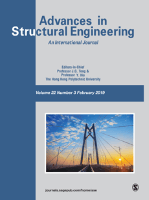
ADVANCES IN STRUCTURAL ENGINEERING
Fostering Collaboration for Sustainable Construction SolutionsADVANCES IN STRUCTURAL ENGINEERING, published by SAGE PUBLICATIONS INC, is a leading journal dedicated to the advancement of knowledge in the fields of Building and Construction, as well as Civil and Structural Engineering. With a solid impact factor and a commendable Scopus ranking (Rank #60 in Building and Construction, Rank #105 in Civil and Structural Engineering), this journal stands at the forefront of academic research, providing a platform for high-quality articles that contribute significantly to the discipline. Covering a range of topics from innovative construction techniques to sustainable engineering practices, the journal aims to foster collaborative dialogue among researchers, industry professionals, and students alike. As of 2023, it boasts impressive category quartiles, ranking Q1 in Building and Construction and Q2 in Civil and Structural Engineering. ADVANCES IN STRUCTURAL ENGINEERING is a vital resource for those looking to stay abreast of emerging trends and groundbreaking developments in structural engineering, promoting an environment of continuous learning and application of best practices. With a convergence of research from 1999 to 2024, the journal not only emphasizes theoretical frameworks but also bridges the gap between academia and practical application in engineering projects.

ACI STRUCTURAL JOURNAL
Elevating Structural Engineering Through Rigorous ResearchThe ACI Structural Journal, published by the American Concrete Institute, serves as a premier platform for scholarly articles and research findings in the fields of building and construction and civil and structural engineering. With a commitment to advancing concrete technology and its applications, this journal has amassed an impressive reputation, holding a Q2 ranking in both Building and Construction and Civil and Structural Engineering categories as of 2023. The journal’s focus on innovative research and practical applications enables professionals, researchers, and students to stay at the forefront of industry developments. Although it does not offer open access, the content bears significant impact, ensuring that readers engage with high-quality research. As the journal converges its years of publication from 1987 to 2024, it continues to enrich the academic and professional discussions surrounding structural engineering and concrete science.
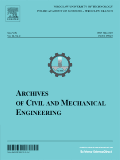
Archives of Civil and Mechanical Engineering
Fostering Knowledge in Civil and Mechanical DisciplinesArchives of Civil and Mechanical Engineering is a distinguished peer-reviewed journal published by SpringerNature, focusing on advancing the fields of civil and mechanical engineering. With an impressive Q1 ranking in both categories in 2023, this journal caters to a global audience, addressing the evolving challenges and innovations within these vital engineering disciplines. The journal has been a pivotal platform since its inception in 2006, and it continues to be essential for researchers and practitioners seeking to publish and access high-quality research. The absence of an Open Access option ensures that published works maintain rigorous academic standards, thereby enhancing their value within institutional repositories. With a robust impact factor and high visibility on Scopus—ranking #122 out of 672 in Mechanical Engineering and #74 out of 379 in Civil and Structural Engineering—this journal is an ideal venue for professionals, researchers, and students dedicated to advancing their knowledge and contributing to cutting-edge engineering practices. Based in Germany and operating internationally, the Archives of Civil and Mechanical Engineering invites submissions that address critical issues and solutions in contemporary engineering.
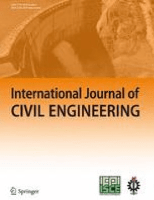
International Journal of Civil Engineering
Innovating Today for a Resilient TomorrowThe International Journal of Civil Engineering, published by Springer International Publishing AG, is a premier platform dedicated to advancing the field of civil engineering. With a notable impact factor and a strong reputation reflected in its Q2 quartile rankings in both Civil and Structural Engineering as well as Geotechnical Engineering and Engineering Geology, this journal facilitates the dissemination of high-quality research from 2009 through 2024. Researchers and professionals can access cutting-edge studies and innovative practices that address contemporary challenges in civil engineering, such as sustainable infrastructure development, environmental impacts, and advanced material technologies. Situated in Switzerland, the International Journal of Civil Engineering emphasizes the critical interplay between theory and application, making it an essential resource for students, academics, and industry leaders seeking to stay at the forefront of their disciplines.

Journal of Structural Integrity and Maintenance
Elevating Standards in Structural Engineering ResearchThe Journal of Structural Integrity and Maintenance, published by Taylor & Francis Ltd, serves as a prestigious platform dedicated to the advancement of knowledge in the fields of structural integrity, civil engineering, and materials science. With an ISSN of 2470-5314 and an E-ISSN of 2470-5322, this journal is uniquely positioned to address the critical challenges faced by researchers and professionals in building and construction, mechanical engineering, and related domains. Since its inception in 2016, this journal has been consistently recognized for its quality, currently holding a Q2 rank across several disciplines, including Building and Construction and Civil and Structural Engineering in 2023. The journal aims to publish high-quality research that contributes to the understanding and maintenance of structural integrity, fostering innovations that promote safety, efficiency, and sustainability in engineering practices. Researchers and students alike are encouraged to engage with this rich repository of knowledge, which plays a vital role in shaping future advancements in structural engineering and materials science.
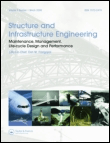
Structure and Infrastructure Engineering
Elevating Standards in Civil and Structural EngineeringStructure and Infrastructure Engineering, published by TAYLOR & FRANCIS LTD, is a premier academic journal that serves as a vital resource in the fields of engineering and construction. Featuring an ISSN of 1573-2479 and an E-ISSN of 1744-8980, this journal has established its reputation as a leader in disseminating high-quality research. Since its inception, it has successfully transitioned through converged years from 2007 to 2024, earning a prestigious position within the Q1 quartile across multiple engineering disciplines, including Building and Construction, Civil and Structural Engineering, and Ocean Engineering, among others. Its impact is underscored by impressive Scopus rankings, particularly its 5th rank in Ocean Engineering within the top 95th percentile. The journal’s commitment to advancing knowledge in safety, risk, reliability, and quality makes it an indispensable platform for researchers, professionals, and students aiming to stay at the forefront of engineering innovations. Access to its comprehensive articles allows for a deeper understanding of contemporary challenges and solutions in infrastructure development.
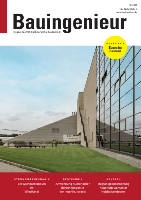
Bauingenieur
Exploring Innovations in Civil and Structural EngineeringBauingenieur, an established journal in the field of Building and Construction and Civil and Structural Engineering, has been a significant platform for scholarly discourse since its inception in 1969. Published by VDI FACHMEDIEN GMBH & CO KG UNTERNEHMEN FACHINFORMATIONEN in Germany, this journal, available in both print (ISSN: 0005-6650) and electronic formats (E-ISSN: 1436-4867), serves as a vital resource for researchers, professionals, and students dedicated to advancing knowledge and practice in engineering. Although currently without open access options, Bauingenieur aspires to contribute to the academic community by presenting cutting-edge research, case studies, and technical reviews within the realms of construction and civil engineering. As evidenced by its categorizations in the 2023 Scopus rankings, where it has a Q4 designation in both relevant categories, it provides an essential resource for understanding current trends and challenges in the industry. The journal welcomes contributions that push the boundaries of knowledge and foster innovative solutions in the built environment.

Civil Engineering Infrastructures Journal-CEIJ
Building bridges between research and practice in civil engineering.Civil Engineering Infrastructures Journal (CEIJ), published by the University of Tehran, College of Engineering, is a premier platform dedicated to advancing the field of civil and structural engineering. With an ISSN of 2322-2093 and an E-ISSN of 2423-6691, CEIJ has been an Open Access journal since 2013, ensuring that critical research is accessible to a global audience. While it currently holds a Q4 category ranking in Civil and Structural Engineering as per the 2023 quartiles, the journal is committed to enhancing its reputation and impact within the academic community. Researchers, professionals, and students will find valuable insights in its compelling articles, which cover a wide array of topics pertinent to civil engineering infrastructures. The journal aims to foster innovative ideas and solutions that address contemporary challenges in the industry. As a publication rooted in Iran but reaching an international readership, CEIJ serves as a significant conduit for disseminating impactful research in the ever-evolving landscape of civil engineering.
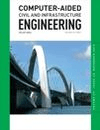
COMPUTER-AIDED CIVIL AND INFRASTRUCTURE ENGINEERING
Elevating Engineering Standards with Computational InsightsCOMPUTER-AIDED CIVIL AND INFRASTRUCTURE ENGINEERING, published by WILEY, stands as a leading journal in the domains of civil and structural engineering, computational theory, and computer-aided design since its inception in 1986. With an impressive ISSN of 1093-9687 and E-ISSN of 1467-8667, this esteemed UK-based journal holds a prestigious position in the academic community, reflected by its Q1 ranking in numerous relevant categories, including Civil and Structural Engineering and Computer Graphics as of 2023. The journal is renowned for promoting innovative research that utilizes computational techniques to solve complex engineering problems, making it an essential resource for researchers, professionals, and students alike. Despite its lack of open access options, the journal garners significant interest due to its rigorous peer-review process and high-impact articles, underlining its importance in the advancement of infrastructure engineering practices and technologies. With a Scopus ranking placing it among the top journals in various engineering and computer science fields, COMPUTER-AIDED CIVIL AND INFRASTRUCTURE ENGINEERING continues to foster knowledge and collaboration, ultimately contributing to the future of smart and resilient infrastructure development.